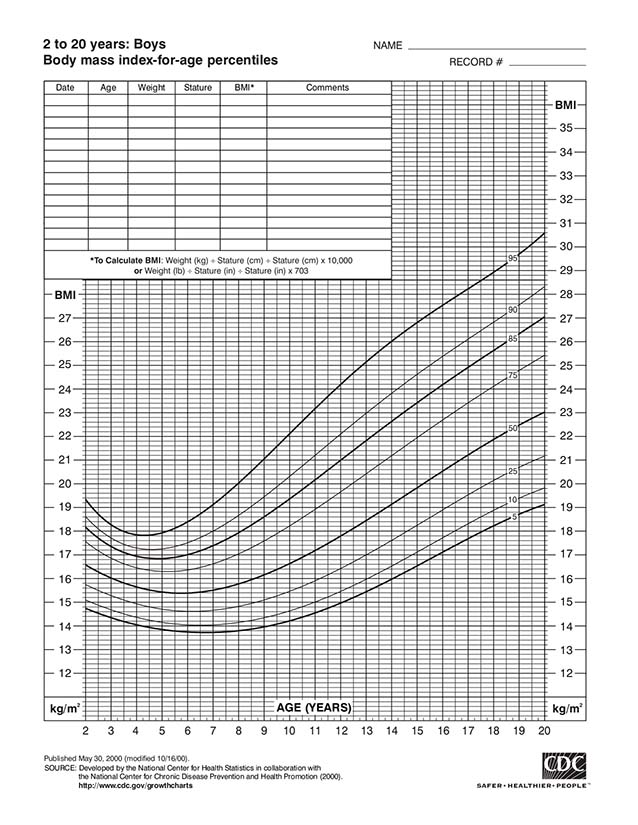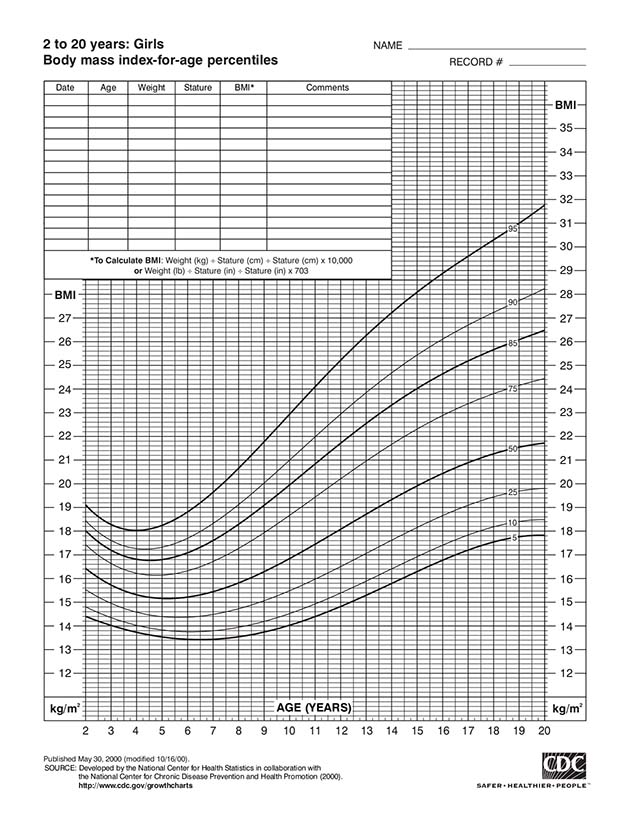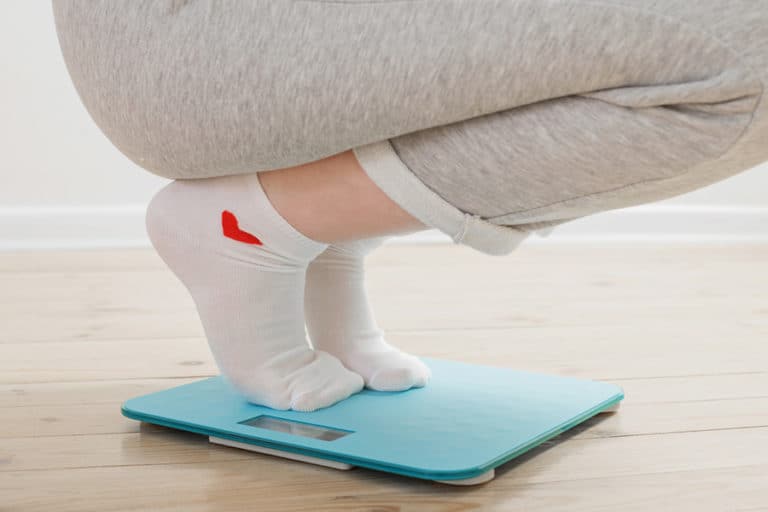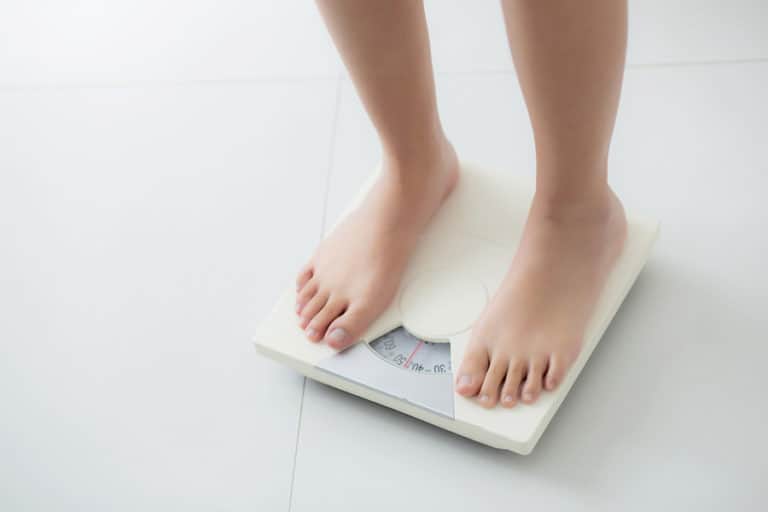Average Height and Weight Chart for Teenagers

Wondering if you’re average when it comes to height and weight? Check out the height and weight chart below to find out where you stand.
Are you looking for a height and weight chart specifically designed for teenagers? If you’re a teenager, you may have found yourself wondering, “how much should I weigh for my age?” You’re not alone! A lot of teens are curious about this information.
We will provide an average height and weight chart for teenagers in the United States. We will also discuss how height and weight can vary according to gender and age. Keep reading to learn more!
Average height and weight for teenagers in the United States
Teenage is not one monolithic age bracket. So, no ideal body weight universally applies to all teenagers. That being said, the Centers for Disease Control and Prevention (CDC) provides approximate optimum average height and weight ranges for both boys and girls. For the purposes of this article, “teenagers” will be considered to be those aged 13-19.
In the United States, the average height for a 13-year-old boy is about 56-66 inches (143-169 cm) and weight is about 75.39-115.9 lbs (34.2-52.6 kgs). On the other hand, the average height for girls of the same age is about 57-66 inches (139-163 cm) and weight is 76.2-116.6 lbs (34.6-52.9 kgs).
The average height for a 19-year-old boy is about 65-74 inches (164-188 cm). The average weight for a 19-year-old boy is between 120.8-170.8 lbs (54.8-77.5 kgs). For girls of the same age, the average height is about 60-69 inches (152-174 cm), while the average weight ranges from about 101.1-142.6 lbs (45.9-64.7 kgs).
Therefore, there is a wide range of what is considered normal for teenage boys and girls in terms of weight and height. However, it is important to keep in mind that these are averages and that some teenagers may be taller or shorter than average, or heavier or lighter than average.
Healthy height and weight for teenagers – Boys and Girls
Here is an easy-to-refer height and weight chart for teenagers between 13-19 years of age. This will give you an idea of what range your weight and height should ideally fall in based on your age and gender.
Height and weight chart for teenage boys
| Age | Height | Weight |
| 13 | 56-66 inches (143-169 cms) | 75.39-115.9 lbs (34.2-52.6 kgs) |
| 14 | 59-69.6 inches (150-177 cms) | 84.6-128.9 lbs (38.4-58.5 kgs) |
| 15 | 62-72 inches (157-182 cms) | 94.7-141.3 lbs (43.0-64.1 kgs) |
| 16 | 63-73 inches (161-185 cms) | 104.2-152.1 lbs (47.3-69.0 kgs) |
| 17 | 64-74 inches (163-187 cms) | 111.9-160.4 lbs (50.8-72.8 kgs) |
| 18 | 65-74 inches (164-188 cms) | 117.2-166.4 lbs (53.2-75.5 kgs) |
| 19 | 65-74 inches (165-188 cms) | 120.8-170.8 lbs (54.8-77.5 kgs) |
Height and weight chart for teenage girls
| Age | Height | Weight |
| 13 | 57-66 inches (146-168 cms) | 76.2-116.6 lbs (34.6-52.9 kgs) |
| 14 | 59-67 inches (150-171 cms) | 83.5-125 lbs (37.9-56.7 kgs) |
| 15 | 59-69 inches (151-173 cms) | 89.7-130.9 lbs (40.7-59.4 kgs) |
| 16 | 59-69 inches (152-173 cms) | 94.5-134.7 lbs (42.9-61.1 kgs) |
| 17 | 60-68 inches (152-173 cms) | 97.8-137.3 lbs (44.4-62.3 kgs) |
| 18 | 60-69 inches (152-174 cms) | 99.8-139.7 lbs (45.3-63.4 kgs) |
| 19 | 60-69 inches (152-174 cms) | 101.1-142.6 lbs (45.9-64.7 kgs) |
Average weight vs healthy BMI for teenagers
Average weight is often used as a parameter to determine whether someone is a healthy weight, but this doesn’t take into account different body types. It merely suggests the ideal body weight range.
A more accurate measure of whether a person is a healthy weight is their Body Mass Index (BMI). It takes a person’s overall body composition into account. It is calculated by taking a person’s weight in kilograms and dividing it by their height in meters squared. You can use a good BMI calculator to assess your body fat percentage.
Using a calorie calculator and a BMI calculator will give you a better idea of how many calories you should consume daily to maintain your ideal weight.
Remember that variations exist between different ages, genders, and ethnic groups. For example, Asian teenagers tend to have a lower BMI than their Caucasian counterparts. It’s important to consider all factors when determining whether someone has a healthy weight. BMI can be a helpful starting point to assess whether a teenager falls within a healthy range.
The video below will give you an idea of how to read the growth charts and find out in which weight category does your teen falls.
For your quick reference, we have attached the teenage weight charts below:

Source: CDC [1]Centers for Disease Control and Prevention: 2 to 20 years: Boys Body mass index-for-age percentiles

Source: CDC [2]Centers for Disease Control and Prevention: 2 to 20 years: Girls Body mass index-for-age percentiles
Understanding teenage bodies and their growth
The teenage body goes through a lot of changes in a very short span. The teen years are characterized by growth spurts, puberty, and hormonal fluctuations. All of these factors can affect a teenager’s weight and height. The brain also undergoes significant development during this time, resulting in changes in mood and behavior.
Here are a few factors that affect weight and height levels during teenage years:
1. Hormones
The body’s weight and height can fluctuate during the teenage years due to hormones.
For boys, testosterone levels increase during puberty, which can cause them to grow taller and gain more muscle mass.
For girls, estrogen levels increase during puberty, which can cause them to gain body fat and grow breast tissue. Their waist circumference and hip sizes might also undergo a few changes.
Some teenagers may experience extreme fluctuations due to medical conditions or side effects of medications.
For boys, height usually begins to increase around the age of 12, while girls tend to start growing taller a little earlier, around age 10. As for weight, girls may start to gain a little body fat around age 14 or 15, while boys typically don’t start putting on extra pounds until they’re a little older, around 16 or 17.
All of these fluctuations are due to hormones that are released during puberty. Teenagers may also notice changes in their skin, hair, and moods. So although it can be challenging to deal with the physical changes that come with being a teenager, it’s important to remember that everyone goes through it and that it’s all part of growing up.
2. Growth spurts
Growth spurts are periods of rapid growth that occur during adolescence. They usually happen in boys a few years later than in girls.
The average height gain during a growth spurt is about 3 inches (8 cm). By the time they finish their growth spurts, most girls will have reached their adult height, but boys will still be growing. In addition to height, weight also increases during the teenage years. Boys continue to gain weight during their teenage years, while girls tend to plateau or even lose weight.
3. Diet, exercise, and lifestyle
Diet, exercise, and lifestyle habits can all affect growth during the teenage years. Lifestyle choices such as smoking or spending too much time in front of a computer can also affect the body’s growth.
For example, teens who eat a healthy diet and exercise regularly tend to be of normal weight, while those with sedentary lifestyles and unhealthy eating habits are more likely to gain excess weight. The best way to promote growth during the teenage years is to maintain healthy habits. Eating nutritious foods, regular exercise, and avoiding harmful substances like tobacco and drugs will help teens reach their full potential physical development.
4. Stress
Both weight and height can be greatly affected by stress during the teenage years. Stress can come from many sources, such as school, college, family, friends, or peer pressure. Growth spurts and puberty can also cause a temporary increase in stress levels due to hormonal fluctuations.
Stress can lead to a disruption in the normal growth process, resulting in a taller or shorter height than would be expected. Weight can also be affected by stress during the teenage years. Some teenagers may overeat in an attempt to cope with their stress, while others may lose their appetite altogether. Either way, such changes can have a lasting impact on the teenager’s health and well-being.
Risks of being overweight or underweight
A healthy body mass index is extremely important during the teenage years, as this is when the body is developing and growing at its fastest rate. According to the world health organization(WHO) [3]World Health Organization: Obesity and overweight, 39% of adults aged 18 years and over were overweight in 2016, and 13% were obese.
Being overweight or underweight can have several health implications in both the short term and long term. Here are some of the risks associated with being overweight or underweight:
1. Growth-related complications
Body fat ratio is closely interlinked to growth-related complications among teenagers. Being overweight can cause obesity among teenagers. Having extremely low body fat can cause malnourishment, stunted growth, abnormal development, and can cause problems with fertility and bone density.
Lack of postural control and muscular strength, fatigue, and anxiety are some of the other health risks associated with being overweight or underweight as a teenager. Therefore, teenagers need to maintain a healthy weight to avoid these health risks.
2. Chronic health problems
Teenagers should be careful about their body mass index because being overweight or underweight can lead to chronic health problems later in life. Being overweight during these crucial growing years can increase the risk of developing obesity leading to a greater risk of respiratory problems, high blood pressure, heart disease, and type 2 diabetes. Being underweight can lead to problems with fertility, bone density, and immune function later in life.
3. Eating disorders
Both being overweight and underweight are closely linked to eating disorders. Problems like anorexia nervosa and bulimia nervosa are often a result of concerns about body weight. Extremely overweight or underweight teens often get caught up in vicious cycles of yo-yo dieting, binging, and purging, which can lead to long-term damage to their health.
What should you do if you are concerned about your weight or height?
If you are a teenager and have concerns about your weight or height, here are a few things you can do.
1. Healthy eating
Healthy dietary habits are an excellent way to ease your concerns about weight or height. Eating a balanced diet that includes plenty of fruits, vegetables, and whole grains will help you reach and maintain your ideal weight. Include lots of lean protein in your diet to help build muscle mass and promote growth. Avoid sugary drinks and foods high in fat. Be sure to stay hydrated by drinking plenty of water throughout the day.
2. Healthy lifestyle
A healthy lifestyle goes a long way in ensuring that you reach your full potential height and maintain a healthy weight. Get plenty of exercises to help build strong bones and muscles. Manage stress in healthy ways to avoid disruptions in growth. Make some healthy lifestyle changes and try to develop good discipline in your life to help promote healthy growth.
3. Exercise
According to CDCs [4]Centers for Disease Control and Prevention: How much physical activity do children need? guidelines, teenagers should get at least one hour of physical activity daily. Working out as a teen is a great way to promote healthy growth and development. It helps build strong bones and muscles. Exercise for at least 30 minutes each day. Choose some healthy exercises for teenagers, or simply pick activities you enjoy, such as playing sports, walking, biking, swimming, or dancing.
4. Rest
Getting enough rest regularly results in a healthier weight and optimum growth. Teenage is a time when bodies go through several disruptions. These changes are bound to impact your sleep patterns. And yet, most teenagers need at least 8 hours of sleep every night. Figure out ways to ensure that you get enough sleep. Avoid caffeine and blue screens before bed, establish a regular sleep schedule and create a relaxing bedtime routine.
5. Recreation
Your growth, health, and well-being depend on how happy, rested, and relaxed you feel. Therefore, it is important to include some recreational activities in your life. Spend time doing things you enjoy outside of school and work. Recreation activities such as listening to music, hanging out with friends, or even playing video games, will help you feel better about yourself and reduce your concerns about your weight or height.
6. Professional health consultations
Regular consultations and visits to your doctor or healthcare provider can never hurt. In fact, they might be just what you need to ease your concerns about your weight or height. Your doctor can help you understand how your body is growing and developing and offer guidance on achieving the optimum height to weight ratio. They can also help you reduce your excess weight or healthily manage your current body weight.
Healthy diet ideas for teenagers to ensure healthy growth
Listed below are a few tips that can help teenagers incorporate healthy eating habits into their lives, which will, in turn, help with their growth:
- Try not to skip meals – especially breakfast. You are more likely to gain unwanted weight if you skip meals than if you don’t. Moreover, skipping meals can affect your chances of growing to your full potential height
- Eat plenty of fruits and vegetables, especially dark leafy greens.
- Drink plenty of water to stay hydrated. Drinking water regularly is the best way to ensure a healthy metabolic rate, smooth digestion, and overall good health.
- Ensure you get enough protein, calcium, and iron. Most teenagers, especially girls, tend to be deficient in iron, and calcium and protein are important for bone and muscle growth. Include more lean protein in your diet, such as chicken or fish.
- Avoid eating processed foods and sugary drinks. They are simply empty calories and contribute nothing to your growth and development.
Exercise tips for teenagers to maintain healthy height and weight
Follow these exercise tips during your teenage years to make sure that you do not just keep yourself fit, but also help your body reach its full potential height:
- Choose an exercise routine that you enjoy. Pick some form of cardio that will get your blood rushing to all body parts. Good blood circulation is essential during teenage.
- Start small – even 10 minutes of daily exercise is a good start.
- Whatever physical activity you choose, start with a light warm-up.
- Stretch after your workout to avoid getting sore muscles.
- Drink plenty of water before, during, and after your workout. Proper hydration keeps your body’s core temperature stable and ensures that your muscles and joints are supple and lubricated.
- Take breaks if you need them, but don’t overdo it.
- When working out or while measuring your workout results, don’t compare yourself to others – everyone is different and has their unique strengths and weaknesses.
- Join a sports team or club at school, or find a friend to exercise with you for extra motivation.
Conclusion
Achieving and maintaining the ideal body weight to height ratio is crucial during the teenage years to avoid chronic diseases, abnormal growth, poor brain and motor function, weakened immunity, and so on. However, one must remember that obsessing over weight or height during this phase can also spell disaster for long-term health.
If you’re concerned about your weight or height, read the above charts, use a good BMI calculator and calorie calculator, or talk to your doctor. They can help you understand how your body is growing and offer guidance on reaching your full potential height. Most importantly, focus on being healthy.
References
| ↑1 | Centers for Disease Control and Prevention: 2 to 20 years: Boys Body mass index-for-age percentiles |
|---|---|
| ↑2 | Centers for Disease Control and Prevention: 2 to 20 years: Girls Body mass index-for-age percentiles |
| ↑3 | World Health Organization: Obesity and overweight |
| ↑4 | Centers for Disease Control and Prevention: How much physical activity do children need? |







